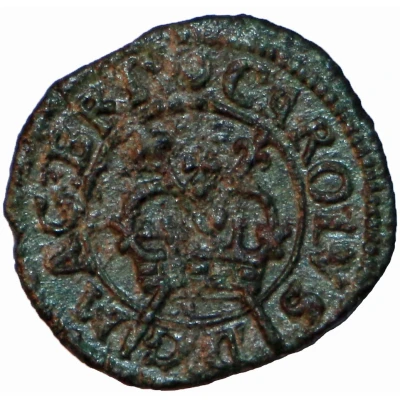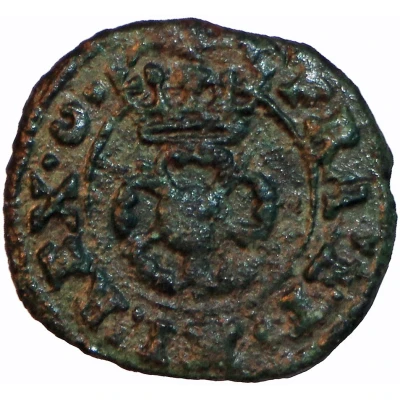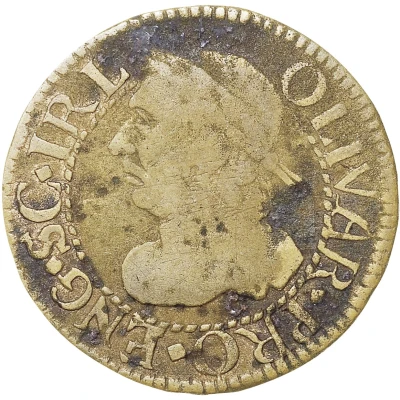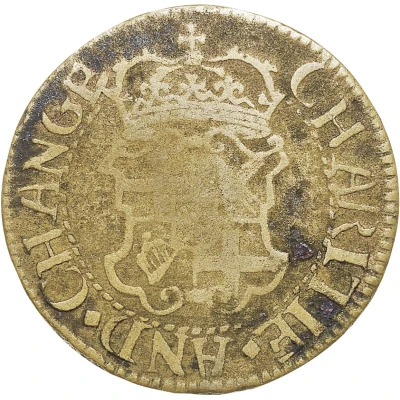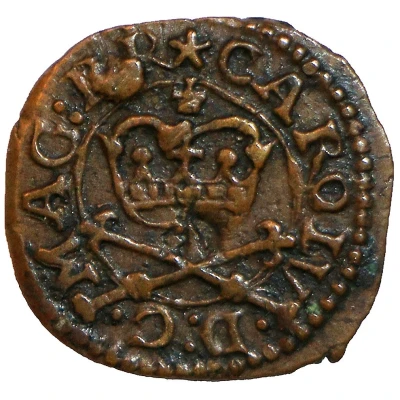
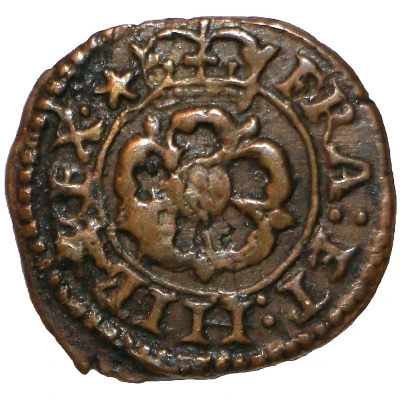

© John Conduitt (CC BY-SA)
1 Farthing - Charles I Rose issue; type 5 ND
| Copper | 1.13 g | 13 mm |
| Issuer | England (United Kingdom, British Overseas Territories and Crown Dependencies) |
|---|---|
| King | Charles I (1625-1649) |
| Type | Token |
| Years | 1643-1644 |
| Value | 1 Farthing (1⁄960) |
| Currency | Pound sterling (1158-1970) |
| Composition | Copper |
| Weight | 1.13 g |
| Diameter | 13 mm |
| Shape | Round (irregular) |
| Technique | Hammered |
| Orientation | Medal alignment ↑↑ |
| Demonetized | Yes |
| Updated | 2024-10-08 |
| Numista | N#302480 |
|---|---|
| Rarity index | 93% |
Reverse
Single rose, legend around, privy mark mullet at end.
Script: Latin
Lettering: FRA: ET: HIB: REX.
Unabridged legend: Franciae Et Hiberniae Rex
Translation: France and Ireland, King (continuation of obverse legend)
Comment
Everson Type 5a (Peck/BMC Type 3a, 348-9) has sceptres with bosses on the handles (pictured). It is bimetallic with copper centre and brass ring with brass wedge at 12 o'clock (sometimes absent or difficult to discern).Everson Type 5b (Peck/BMC Type 3b-e, 350-4) does not have bosses on the handles. It sometimes has a brass plug instead of a wedge, or no brass at all. This type has many legend variants, including: CAROLV MAG BR / FRA HIB (Peck 3b), FR HIB (Peck 3c); CAROLV MA BRI / FRA HIB (Peck 3d), FR HIB (Peck 3e).
North#2293
The farthings with sceptres that cross under the crown are thought to have been struck under Parliament, who wanted to differentiate the design to make sure Charles I's farthings (used to pay his army) couldn't be exchanged for silver at the London Token House during the Civil War.
James I and Charles I farthings were considered tokens as they were not legal tender. The mullet was a privy mark (to prevent forgery), not a mintmark, as farthings with all privy marks were pressed at the same location, sometimes on the same sheet of copper.
Interesting fact
One interesting fact about the Token 1 Farthing - Charles I (Rose issue; type 5) ND (1643-1644) from England is that it was issued during a time of great economic turmoil in the country. The English Civil War had recently begun, and the royal mint was not functioning properly, leading to a shortage of official currency. As a result, a variety of private tokens, like this one, were issued by local authorities and merchants to fill the gap. This coin's design, featuring a rose on one side and a crown on the other, was a common motif for tokens issued during this period.
